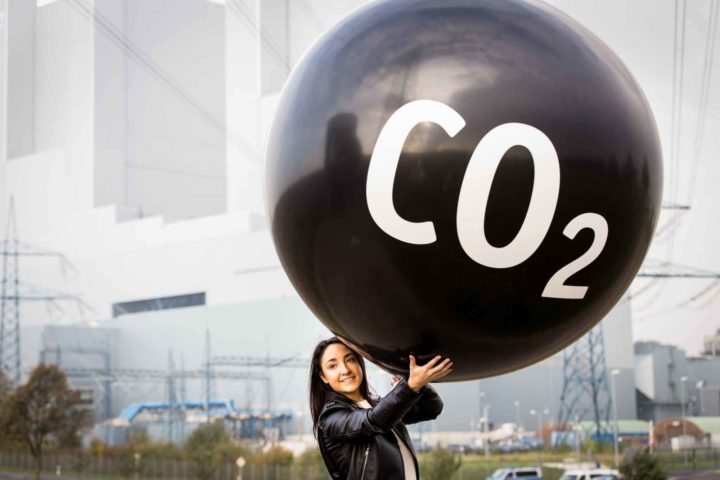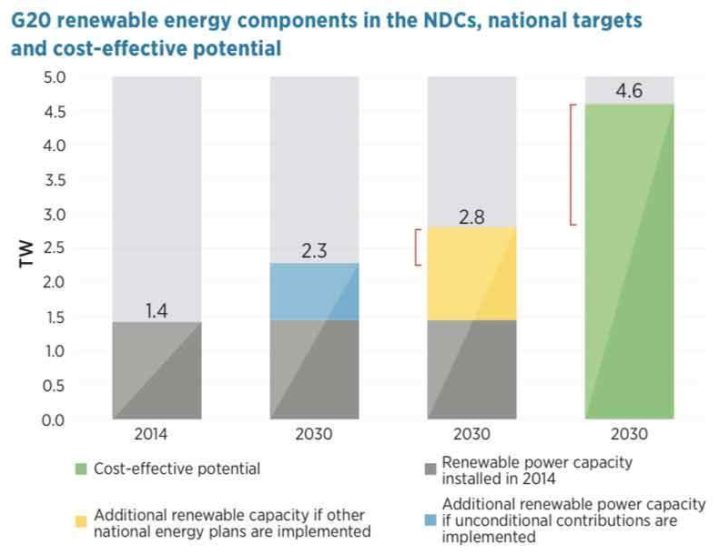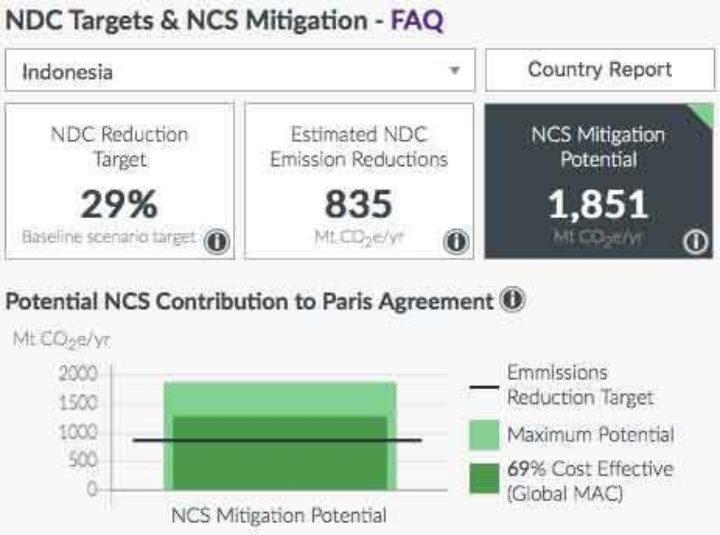Cutting carbon: Why so shy?
Many nations could set more ambitious climate targets, research suggests
By Richard Black
Share
Last updated:
At the Paris summit two years ago, governments made two separate promises on curbing the extent of climate change.
In one, they pledged to keep global warming since pre-industrial times ‘well below’ 2 degrees Celsius, and to aim for 1.5ºC.

In the other, they put forward national plans on curbing carbon emissions that take us to a very different world – with global warming of around 3ºC by the end of the century.
That’s why phrases such as ‘bend the curve’ and ‘ramp up the ambition’ are heard so often in the corridors and coffee bars of the UN convention centre here in Bonn.
The prevailing theory is – and it's a pretty obvious one – that many governments aren’t yet convinced that they can cut emissions on the scale needed to usher in that ‘well below 2ºC’ world without inflicting substantial pain on their economies. They like the vision, but not yet the pathway needed to get there.
But two recent pieces of research suggests there’s another answer that may be just as important: they haven’t looked hard enough at what’s happening in their own countries, at what they’ve promised in other fora, or at what’s possible.
Good knight IRENA
One comes from IRENA, the International Renewable Energy Agency.
Unsurprisingly, plans for a big rollout of renewable energy form a centrepiece of many countries’ pledges into the Paris Agreement, which are known as Nationally Determined Contributions (NDCs).
IRENA boffins simply went through countries’ NDCs to see what they’re proposing for renewables.
Here’s the headline figure. Totting up the renewable energy rollout plans contained in the NDCs adds up to a projected increase in renewable energy capacity of 3.6% per year between 2015 and 2030.
Sounds ambitious? Well – not when the annual growth rate seen 2010-2015 was 8.1%.
Even if prices were constant it would be extraordinary to see the deployment rate grinding to a halt like this – and of course, prices aren’t constant, certainly not for wind and solar. Solar prices have fallen by about 70% in the last five years. The figure for wind is less spectacular as it was already cheaper than solar – but the International Energy Agency reports a price drop of 10% over the last year.
And, as you’d expect, that same IEA report showed that the installation rate of renewables is increased, by 8% in a year, rather than decreasing.
That suggests that overall, the NDCs vastly underestimate the amount of renewable energy capacity that will be installed over the years to 2030.


There are obvious trade-offs here with other demands for land on an increasingly crowded planet, but seeing as many of these approaches bring benefits for wildlife or people if they’re done well, there are obvious attractions too.
A couple of months back we saw a major scientific paper totting up the potential contribution of natural climate solutions to achieving the Paris climate target. The conclusion: they can get us about one-third of the way there at reasonable cost.
Now, The Nature Conservancy, the US-based conservation charity which led that scientific paper, has released a cool online tool that allows you to see, for every country in the world, what potential exists for meeting NDC targets through these ‘natural solutions’.
For some, it’s pretty big: Indonesia can achieve more than its entire NDC pledge through cost-effective natural solutions alone.
Now, such a tool can only be as good as the data going into it. And one suspects that the numbers in and therefore the conclusions out are going to change over time.
Nevertheless, it illustrates that some countries may be able to increase their NDC pledges without too much bother – although in some cases (Indonesia still being a good example) they’re likely to need the financial support they’ve been promised since 2009 in order to realise the full potential.
And at home?
Even countries such as the UK, which are more sophisticated than most in their climate change plans, may be under-estimating the potential of both natural climate solutions and renewables to cut emissions.
The Nature Conservancy’s tool estimates that afforestation and other land-use changes could bring about one-sixth of the emission cut pledged in our NDC (which, just to be clear, is currently the EU's NDC as the bloc made a joint pledge). It’s not clear – genuinely not clear from published plans, I’m not having a dig – whether the government has factored this in or not.
Meanwhile the latest analysis from Bloomberg New Energy Finance reckons that renewables could provide more than half our electricity by 2026. By contrast, the government thinks [pdf link] that a decade after that, renewables will still be chugging along at under half.
Now, all of this doesn’t mean that if countries re-calculate their NDCs thoroughly, we’ll magically be on target for the ‘well below 2ºC’ world of the Paris Agreement. Almost certainly that’s not the case.
But it does suggest there’s more potential there than many governments realise, in these two areas and maybe in others, to become bolder – and so take us closer to the world they said in Paris that they want.
Share